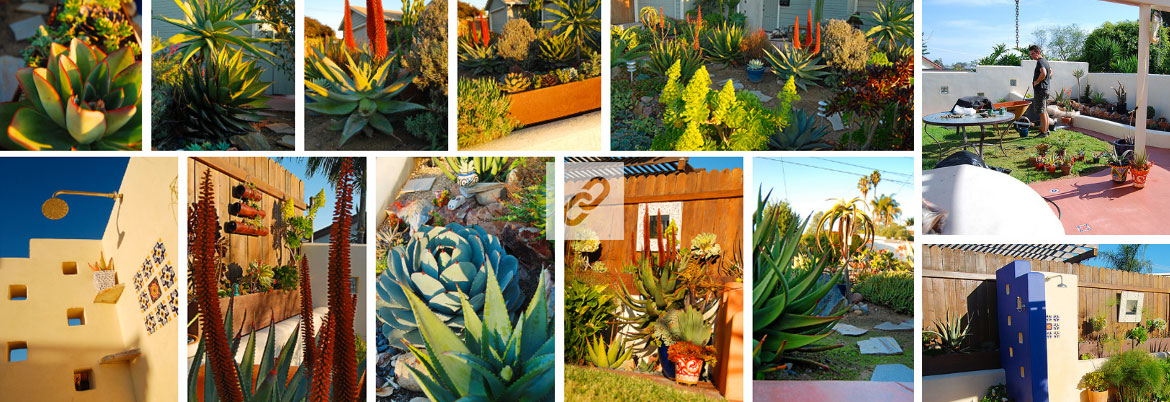“Show me your garden and I shall tell you what you are.” – Alfred Austin
Garden design? That may sound odd at first, but designing a garden requires exactly the same thinking, the same process than designing an online experience or anything creative: a vision, the ability to work with space, to combine colors, to imagine the end result and to anticipate evolution and growth. In fact, a garden is an interactive media by nature.
Any digital project starts by considering which devices it will be displayed, the viewport sizes, the browsers… Therefore environment is a crucial factor when gardening. You would not try to fit an elephant in a mobile phone. Neither would you choose to grow a delicate english grass in the desert. San Diego offers a semi-arid climate with less than 12 inches of annual precipitation in average. We know that water is or will be an environmental challenge. With these facts in mind, a few years ago I met San Diego Zoo’s curator of herpetology, Don Boyer and his brother Tom who have developed a passion for aloes, agaves, succulent plants and cacti. Growing This type of vegetation reduces or eliminates the need for irrigation. I got the virus. When you hear xeriscaping, the old lady garden consisting of a miserable cactus lost in an ocean of gravels with the skull of a dead cow for only companion comes immediately in mind. I will challenge this prejudice. First these plants, like an aloe plicatilis or an agave victoria reginae compacta have been conceived by a genius designer. Their various shapes are modern, symmetrical, and pure, almost futuristic. Their green tones are diverse and twice a year some red, orange or yellow tubular flowers are launched from the plant on a long stem to end as a bright firework. Forget the old lady and imagine the contemporary, square, architectural building made of glass and metal surrounded by sculptural aloes, planted at a perfect rhythm by a minimalistic mind. But the users are not limited to just these two personas, a grandmother or an architect. Before to look at the space of a garden, like any digital experience, you need to understand the personality of your user. With the same raw material or content, aloes and agaves, the objectives may vary if you are dealing with a BBQ aficionados or a British tea drinker. While one desires a big cooking station as a centerpiece for crowded parties, the other one would prefer two little chairs and a tea table for its afternoon contemplation at the deep end of the garden. You need to think of two different user flows to deliver two specific user experiences. Sketches, wireframes in garden or digital world help to plan, to estimate, to play with space, levels and perspectives. It shapes your ideas that you can present to your client or user. Time to roll up your sleeves and to dig. The design principles are the same. Plants, dirt, rocks are your images, your typography, your words. The layout needs to consider the visual relation between colors, empty space rather than white space, which specimens are the main focus of the garden and the secondary content. Then you can add a few plug-ins for specific functions ; a few pots to break the monotony, wood or welded rusty metal planters to bring some texture… a few rocks for the punctuation and you should be close.
There is no smart call-to-action or analytics to evaluate the success of your work. But so far, all the garden owners I dealt with got the virus. Easy maintenance, reduced water cost and discovery of these amazing plants have put a big smile on their face.
View garden design: https://www.flickr.com/photos/joel-paynel/garden
